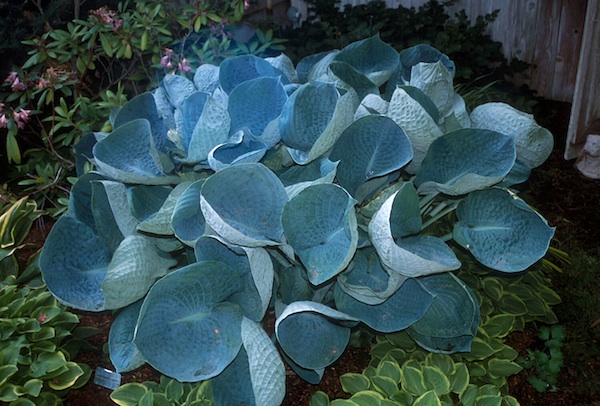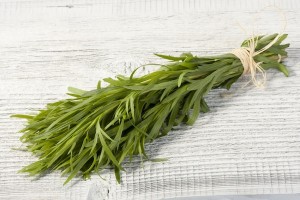
'Northwind' switch grass is the 2014 Perennial Plant of the Year. Photo courtesy perennialresource.com
Every year the Perennial Plant Association names a plant of the year and in 2014, a native ornamental grass gets the nod.
‘Northwind’ switch grass (Panicum virgatum) was selected and introduced by Roy Diblik of Wisconsin’s Northwind Perennial Farm. The specialist in native plants was impressed with its excellent upright form, bluish green foliage and yellow plumes.
‘Northwind’ gets about 4 feet tall, reaching closer to 5 feet when frothy yellow flowers bloom in late summer. Switch grass, which is native perennial throughout most of the United States and Canada, does fine in average to wet soil, and is frequently a resident of rain or swale gardens. It does fine in full sun to part shade.
Cut back to the ground in late winter or early spring. Spring is also the best time to divide switch grass. This grass looks good in a mass planting, or in in a cluster of three as a specimen in a perennial bed.
If hostas are more your thing, the 2014 Hosta of the Year is ‘Abiqua Drinking Gourd’, so designated by the American Hosta Growers Association. This shade-loving perennial has dark blue, heavily puckered leaves that form a 3-inch deep cup. It gets about 18 inches tall and 3 feet wide. The more sun it gets, the more green the leaves will be and the more likely the foliage will sunburn. ‘Abiqua Drinking Gourd’ has white flowers in early summer. Cut back to the ground when leaves have been killed by frost.

'Abiqua Drinking Gourd' hosta gets the 2014 Hosta of the Year award from the American Hosta Growers Association. Photo courtesy of perennialresource.com
The International Herb Association has name Artemisia as the 2014 Herb of the Year. The familiar herb tarragon (A. dracunculus) falls in this family. So do perennial mugworts, the ornamental artemisias, such as ‘Silver King’ (A. ludoviciana) and ‘Silver Mound’ (A. schmidtiana). The potent drink absinthe comes from A. absinthium, sometimes called wormwood.

Tarragon is a member of the Artemisia family, which is the 2014 Herb of the Year. © Andris Tkachenko/iStockphoto.com
Many artemisias can be quite aggressive, spreading quickly with underground stems, so do your research. The aromatic leaves on most varieties are gray or silver. There are green and yellow variegated varieties available, too. Grow artemisia in full sun and well drained, average soil. The plant will rot if kept too wet. Cut back as necessary. Some retain their foliage all winter.